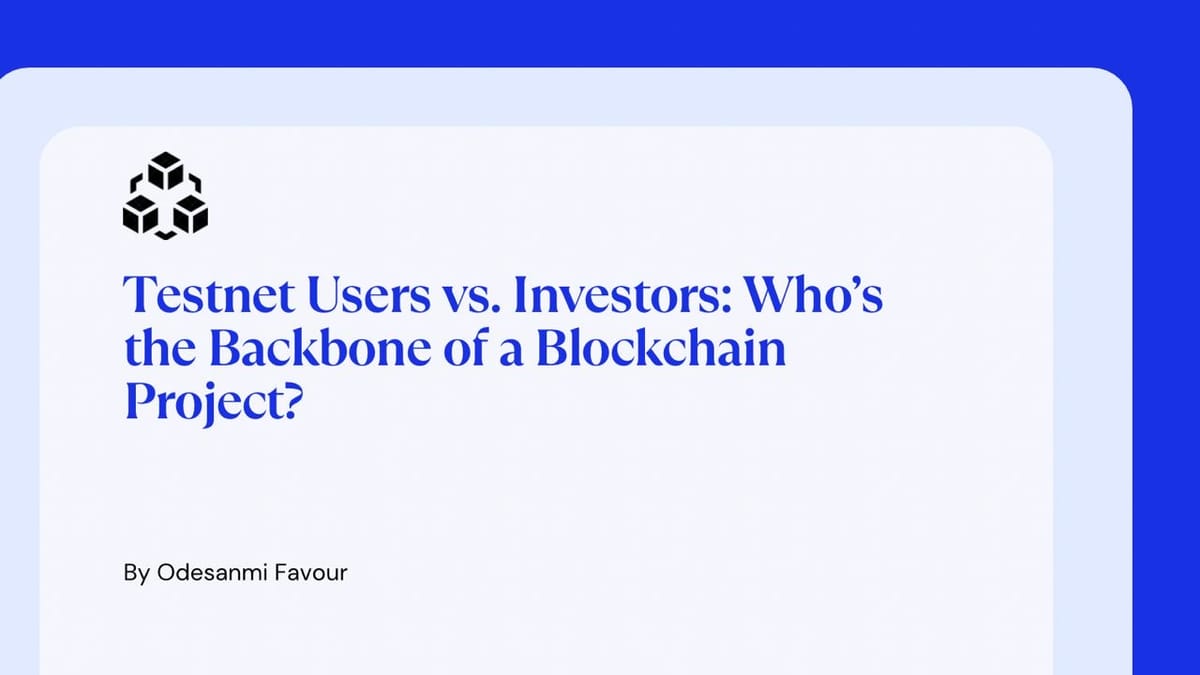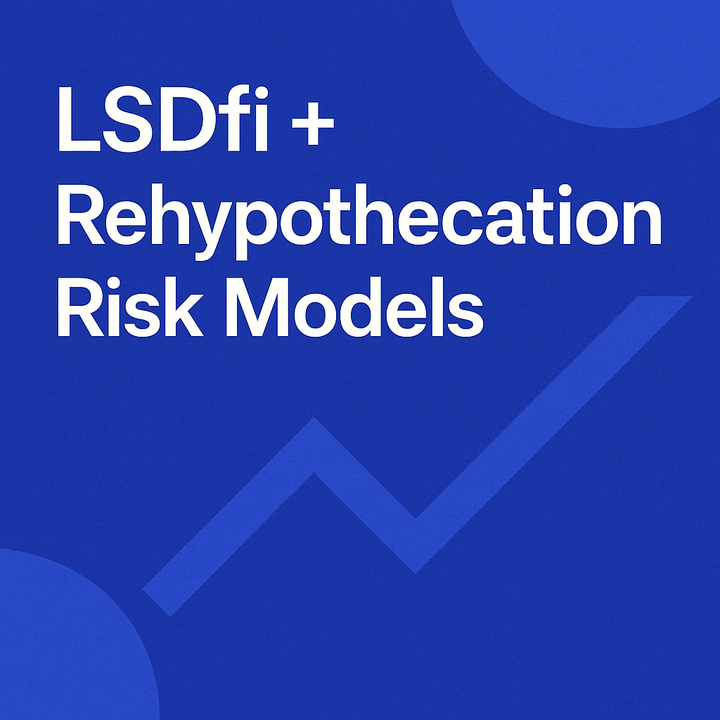Testnet Users vs. Investors: Who’s the Backbone of a Blockchain Project?

Introduction
In the fast-evolving world of blockchain technology, projects rely on diverse stakeholders to succeed. Two critical groups—testnet users and investors—play distinct but interconnected roles in shaping a project’s trajectory. Testnet users stress-test protocols, uncover bugs, and refine functionality, while investors provide the financial fuel to sustain development and drive market adoption. As projects like Ethereum’s Pectra upgrade or MilkyWay’s $MILK TGE demonstrate, both groups are vital, but which is the true backbone? This article dissects their contributions, impacts, and limitations to uncover who holds the key to a project’s success.
In this article, we explore:
1. Testnet Users: The Technical Foundation for Stability and Innovation
2. Investors: The Financial Catalyst for Growth and Adoption
3. Synergy and Balance: Why Both Are Essential
Testnet Users: The Technical Foundation for Stability and Innovation
Testnet users, often developers, validators, or early adopters, are the unsung heroes who test blockchain protocols in simulated environments before mainnet deployment. By identifying bugs, validating features, and providing feedback, they ensure a project’s technical integrity, which is critical for user trust and long-term success. Their contributions are particularly evident in complex upgrades like Ethereum’s Pectra or modular ecosystems like Cosmos IBC.
Key Contributions
1. Bug Detection and Protocol Refinement: Testnet users stress-test features, uncovering issues that could derail mainnet launches. For example, during Ethereum’s Pectra upgrade testing on the Holesky testnet in early 2025, users identified finalization failures, prompting developers to delay the mainnet launch from March to May 7, 2025. This ensured a smoother rollout, preventing potential losses for validators and dApp users when the upgrade went live.
2. Feature Validation: Users validate new functionalities, such as Ethereum’s EIP-7702 (account abstraction) or MilkyWay’s liquid staking for Celestia’s TIA. Their feedback shapes user experience, ensuring features meet real-world needs. For instance, MilkyWay’s testnet users on Initia’s testnet helped refine milkINIT’s restaking logic, reducing slashing risks before the $MILK TGE on April 29, 2025.
3. Decentralized Testing: Testnet users, often globally distributed, provide diverse perspectives, simulating real-world conditions. Solo validators on Ethereum’s Sepolia testnet, for example, tested EIP-7251’s increased validator balance (from 32 to 2,048 ETH), ensuring compatibility with low-grade hardware and enhancing decentralization.
For Example: A testnet user on MilkyWay’s testnet identifies a smart contract vulnerability in the milkTIA minting process, reporting it via GitHub. The fix prevents a potential $10 million exploit post-TGE, earning the user a bug bounty and ensuring protocol stability for thousands of stakers.
Limitations
Testnet users’ impact is constrained by their technical focus. They don’t directly drive market adoption or provide funding, and their engagement often wanes post-launch. Additionally, testnet issues, like Sepolia’s empty block production in 2025, can frustrate users, risking community goodwill.
Investors: The Financial Catalyst for Growth and Adoption
Investors, including retail traders, institutional funds, and venture capitalists, provide the capital and market momentum needed to scale blockchain projects. Their financial backing funds development, marketing, and ecosystem growth, while their speculative activity drives token liquidity and visibility. In a capital-intensive industry, investors are often seen as the lifeblood of a project’s survival and expansion.
Key Contributions
1. Funding Development: Investors fuel project roadmaps through token sales, venture funding, or staking. For example, MilkyWay raised $5 million in a 2024 seed round from investors like Binance Labs and Polychain Capital, enabling the development of its liquid restaking protocol and the $MILK TGE. This capital supported integrations with 10+ DeFi platforms, boosting IBC ecosystem adoption.
2. Market Liquidity and Visibility: Investors drive trading volume and token price stability, attracting further interest. Post-$MILK TGE, a 24-hour trading volume of $24.1 million on exchanges like Bybit and MEXC increased MilkyWay’s visibility, drawing DeFi users to IBC chains. Similarly, ETH’s 10% price surge to $2,711 in February 2025 reflected investor optimism about Pectra’s scalability enhancements.
3. Ecosystem Incentives: Investors often participate in airdrops or staking, aligning their interests with the project’s success. MilkyWay’s airdrop of 100 million $MILK tokens to mPoint holders and Moolitia NFT owners incentivized early investment, fostering a loyal community that staked $190 million in TVL by May 2025.
For Example: An institutional investor allocates $2 million to $MILK during its TGE, staking 50% to earn restaking yields and trading the rest to provide liquidity on Osmosis. Their involvement attracts smaller retail investors, increasing MilkyWay’s TVL and enabling new AVS integrations, like a bridge to Polkadot.
Limitations
Investors’ speculative nature can lead to price volatility, as seen with $MILK’s 8.7% drop to $0.1159 post-TGE. Their focus on short-term gains may also pressure projects to prioritize hype over technical robustness, risking long-term sustainability. Moreover, investors rely on testnet users to ensure the protocol’s stability, as mainnet failures could erode confidence and capital.
Synergy and Balance: Why Both Are Essential
While testnet users and investors each play critical roles, neither can be the sole backbone of a blockchain project. Testnet users provide the technical foundation, ensuring a project is functional and secure, while investors supply the resources and market momentum to scale it. Their interplay creates a feedback loop that drives innovation, adoption, and resilience, as seen in successful projects like Ethereum and Cosmos-based protocols.
Key Dynamics
1. Mutual Dependence: Testnet users rely on investor funding to access resources like testnet faucets or bug bounties, while investors depend on testnet users to validate protocols and mitigate risks. For instance, Ethereum’s Pectra testnet issues in Holesky frustrated investors, causing a 3% ETH price drop in March 2025, but user-driven fixes restored confidence by mainnet launch.
2. Complementary Strengths: Testnet users focus on technical iteration, while investors amplify adoption through capital and advocacy. MilkyWay’s testnet users refined its restaking protocol, enabling secure AVS integrations, while investors’ $5 million seed round funded partnerships with Osmosis and Levana, expanding IBC’s DeFi reach.
3. Community Building: Both groups contribute to a project’s ecosystem. Testnet users, like MilkyWay’s mPoint contributors, often become early investors, while investors participating in governance (e.g., $MILK holders voting on protocol upgrades) reinforce technical development. This synergy fosters a decentralized, engaged community.
For Example: During Ethereum’s Pectra upgrade, testnet users on Hoodi validate EIP-7691’s blob throughput increase, ensuring L2 scalability. Investors, buoyed by this progress, stake more ETH, increasing the network’s security and driving a 5% price rally post-launch. Their combined efforts make Ethereum competitive with Solana, attracting new dApp developers.
Challenges
Balancing the needs of testnet users and investors is complex. Overemphasizing investor-driven hype can lead to rushed mainnet launches, as seen with some Cosmos chains, while neglecting market momentum risks losing relevance to competitors. Projects must incentivize both groups through clear roadmaps, transparent communication, and equitable rewards.
Conclusion
Determining whether testnet users or investors are the backbone of a blockchain project is a false dichotomy—both are indispensable. Testnet users lay the technical groundwork, ensuring protocols are secure and functional, as seen in Ethereum’s Pectra testnets and MilkyWay’s restaking refinements. Investors provide the financial and market catalyst, driving adoption and liquidity, as evidenced by $MILK’s TGE success and ETH’s price surges. Their synergy creates a robust ecosystem where technical innovation meets real-world impact.
For projects to thrive, they must nurture both groups. Testnet users need robust testing environments and incentives like bounties, while investors require transparent progress and opportunities for returns. By fostering this balance, blockchain projects can build resilient, scalable ecosystems that withstand competition and drive mass adoption. Ultimately, the backbone is not one group but the collaborative bridge they build together.


Comments ()